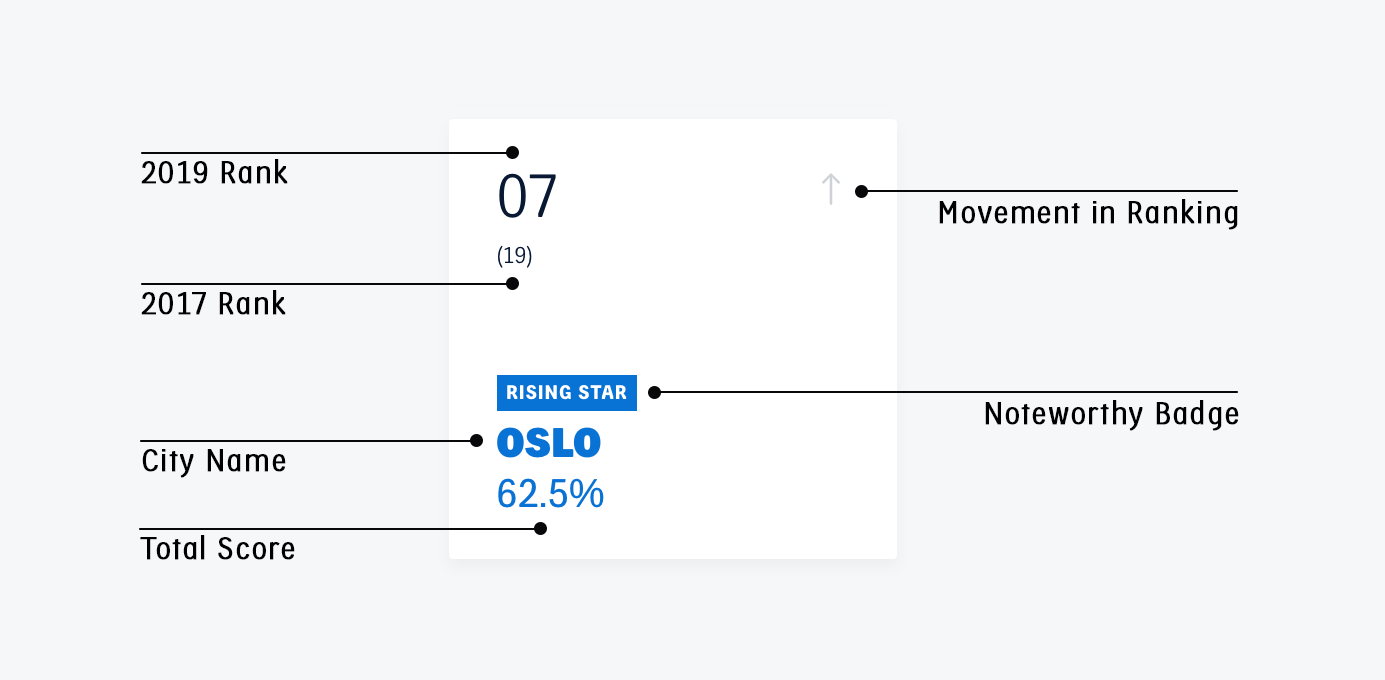THE 2019 COPENHAGENIZE INDEX of bicycle-friendly cities
Welcome to the Copenhagenize Index – the most comprehensive and holistic ranking of bicycle-friendly cities on planet earth. As the fifth edition of the biennial Index since 2011, this year’s effort was made possible through months of intensive teamwork, research and outreach. Creating an inventory of urban cycling in all corners of the world is no small feat – and this year we are as excited as ever to share the most fascinating cycling stories from across the globe.
How to read the 2019 Copenhagenize Index

With each iteration, the Copenhagenize Index evolves. This year, we have again expanded the total number of cities to examine well beyond the 80 we ranked in 2011. The data set continues to grow year-by-year and accounts for hundreds of cities representing every region of the world.
2019 offers up a number of surprises yet again. The three-horse race at the top is as close as ever, with Utrecht being nudged back down to #3 by Amsterdam taking the 2nd position with its bold steps taken in the past years. Meanwhile, Copenhagen continues impressive investments and innovations for cycling to hold onto the #1 spot, but for how long, no one knows. All three of these cities remain role-models for all of the friendly competition below.
The second pack sees a tightening gap between Antwerp, Strasbourg and Bordeaux, as these three cities all strive for greater and greater bicycle friendliness. And at the lead of the third pack is Oslo – the bicycle urbanism darling that shot up in ranking over the last 4 years to an impressive degree.
This year also sees a number of new faces from all over the world on the Top 20 like Bogotà, Bremen, Taipei and Vancouver – newcomers that are showing other cities how possible it is to make our urban centres better for the bicycle. The margins between cities in the third pack of the Top 20 are tight, and those that are innovating, investing and pushing forward with political and citizen action every year, see results in the Copenhagenize Index. Just outside of the Top 20 sit a number of cities all on the cusp of breaking through, each one requiring that sustained investment and implementation of bicycle innovations to see better rankings in 2021.
This year, we have also added a new section called “Success Stories” – sharing a number of inspirational bicycle stories from around the world, outside of the Top 20. These stories show us how bicycle friendliness can come in many shapes and forms, with each new step offering critical utility to the urban citizens that need it.
The 2019 Copenhagenize Index shows the world that it is no longer only the Danish and Dutch cities that are really taking the bicycle seriously. Through a combination of ambition, culture and better streetscapes, cities all around the world are starting to push the envelope for what it means to be bicycle-friendly.
Enjoy this year’s edition of the Copenhagenize Index.
WHY THIS INDEX?
Early in 2011 a discussion arose at Copenhagenize Design Co. about which cities really are the best cities for urban cycling. Professional curiosity was the catalyst for developing this Index. We work with a diverse many cities to help them improve their bicycle friendliness, and thus wanted to be able to offer an international benchmark in order to determine the best and most effective methods for reestablishing the bicycle on the urban landscape.
The Index was originally meant to be a tool for internal use in the company but we quickly realised that the Index was perhaps worth releasing to the public. The scoring system and the criteria remain unchanged. We only publish the Top 20, since we use the Index in our work. This year, we have added a number of success stories of cities outside of the Top 20, to shed a light on emerging and exciting work in lesser-known global cycling hotspots.
The success, reactions and reach of the previous indices show that cities ARE interested in measuring their progress around bicycle transportation issues. The overwhelming responses we receive about the Index are constantly encouraging – a real indication that people care about their cities and want them to be healthier, happier and more convenient.
The bicycle makes sense in our cities. Investment in bicycle infrastructure is a modern and intelligent move for a city to make. An overwhelming amount of global research shows us the social, economic, environmental, and health benefits that come from urban cycling. With rising urbanisation, our cities need modern mobility solutions and the bicycle proves time and again that it can offer results.
Producing the Index is a collaborative effort between our small but global team, with fourteen members of Copenhagenize Design Co. deeply involved in the making of this year's edition:
- Copenhagen: Morten Kabell, James Thoem, Lorenz Siegel, Edoardo Repetto, Catherine Bretheim, Emma Natanzon
- Montréal: Michael Seth Wexler, Alyssa Pichardo, Emma Avery, Marie Lazartigues-Chartier
- France: Clotilde Imbert, Anouchka Strunden
- Barcelona: Jordi Galí Manuel, María Elisa Ojeda
Thanks to James Schwartz from The Urban Country for helping us with the development of the ranking system back in 2011, to our primary media partner WIRED magazine, to all local authorities and associations for sharing valuable information on cycling in their cities, and to the World Bank for providing local support.
Want our help?
Get in touch for more information on the Copenhagenize Index